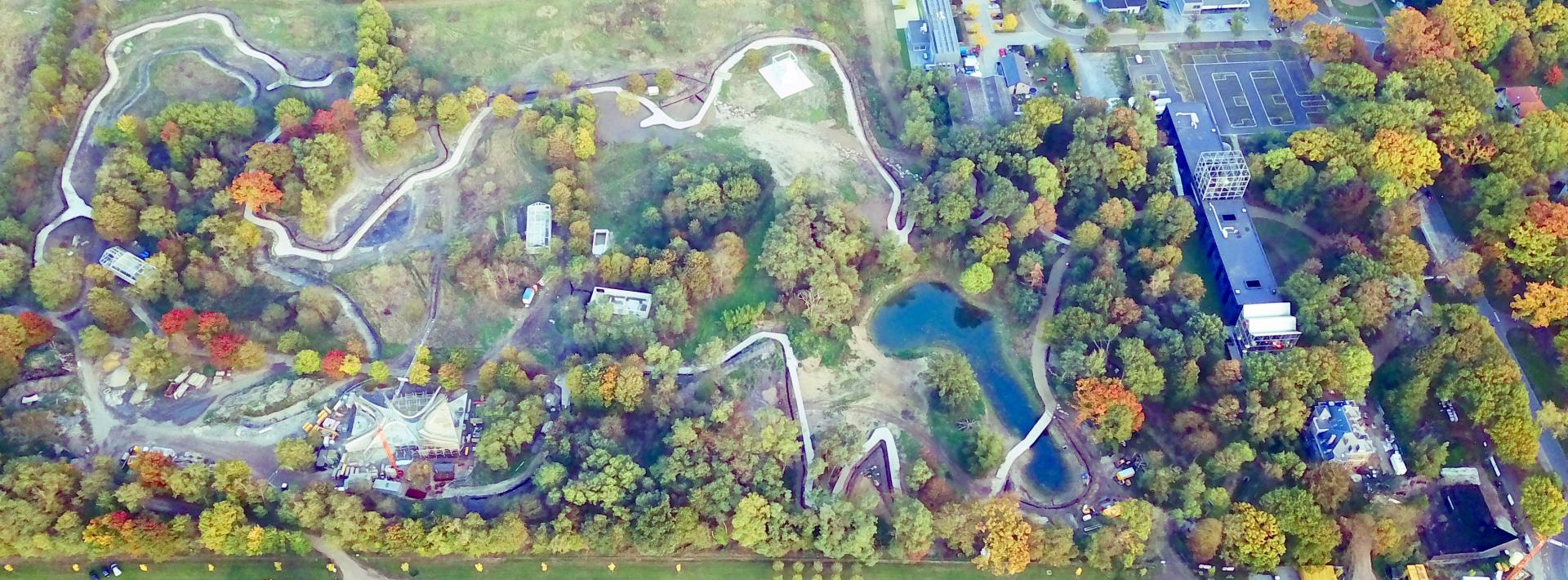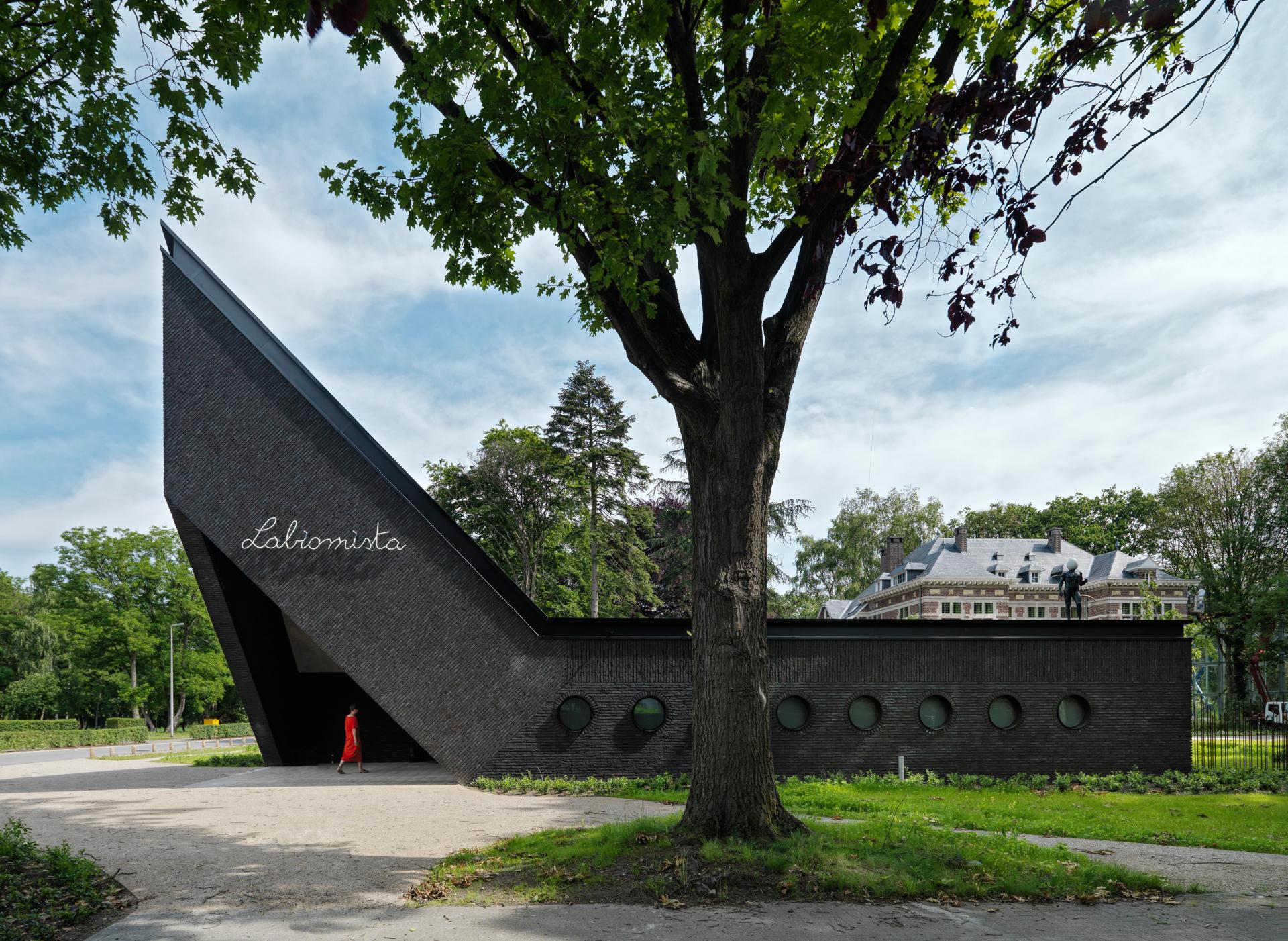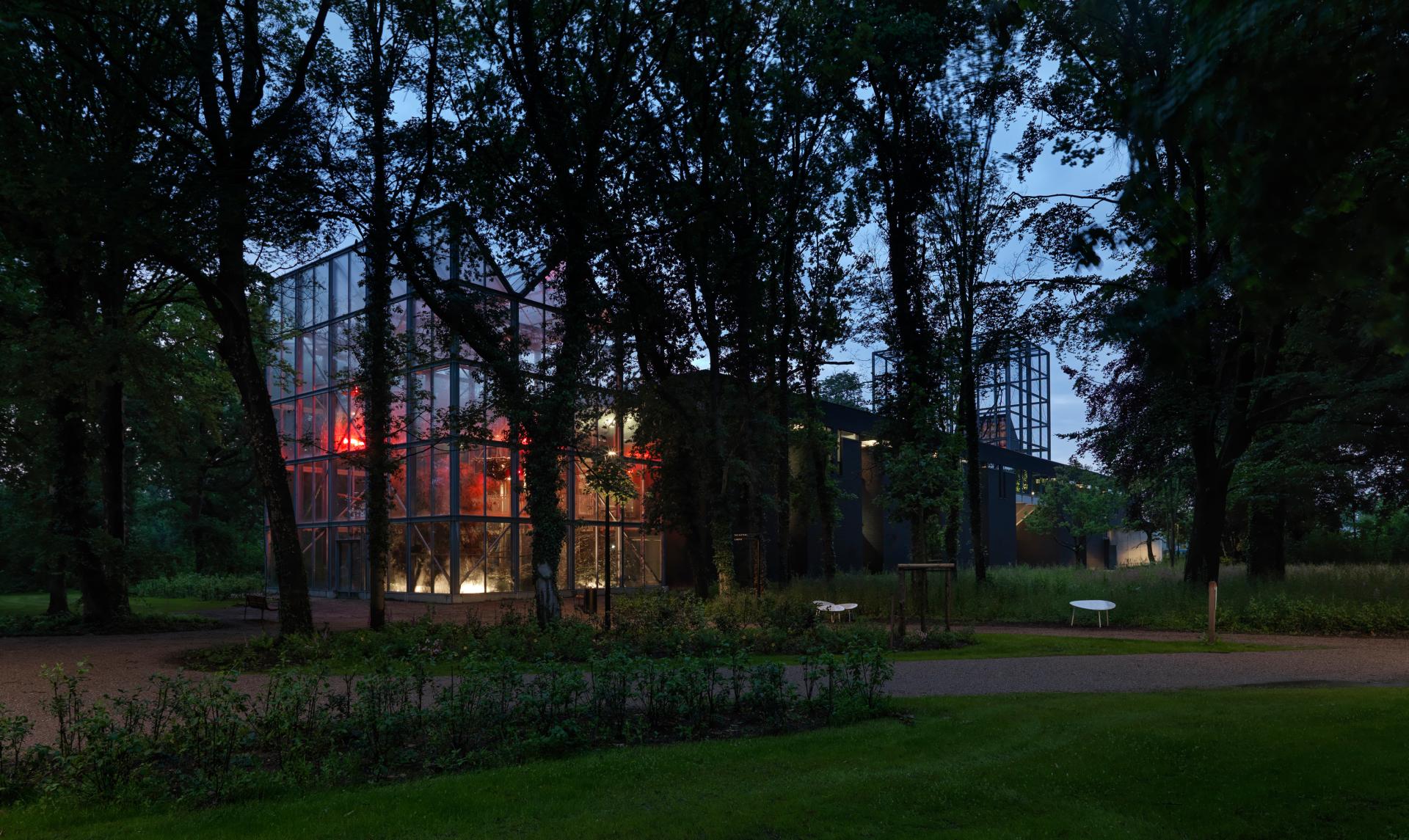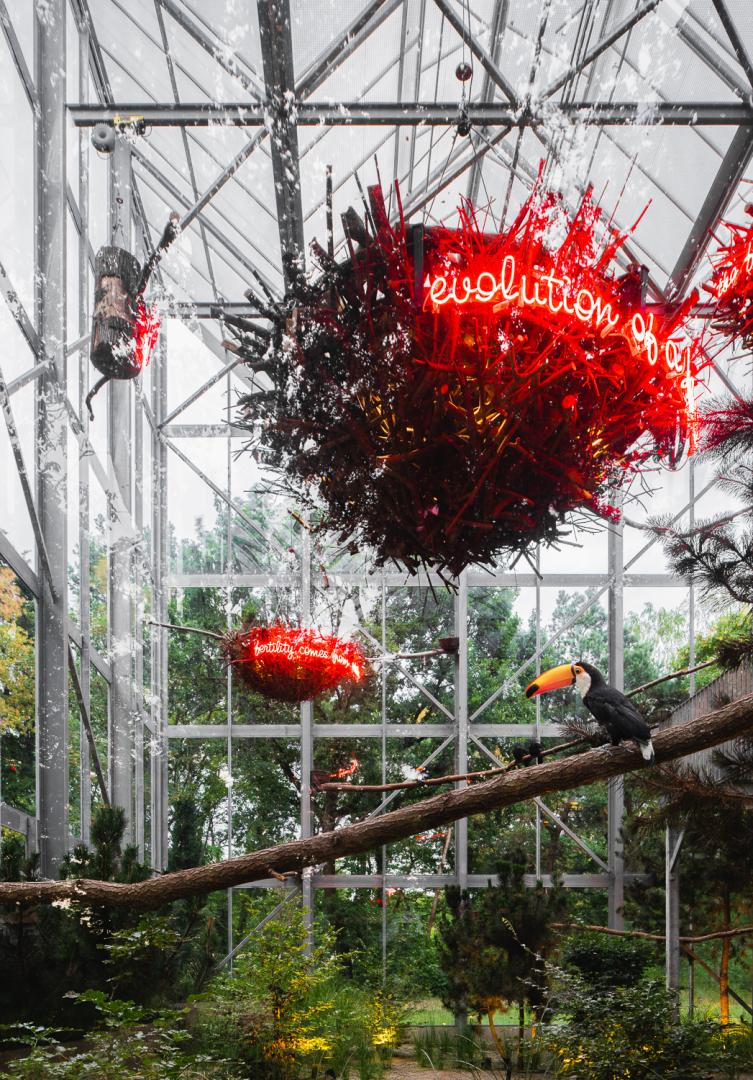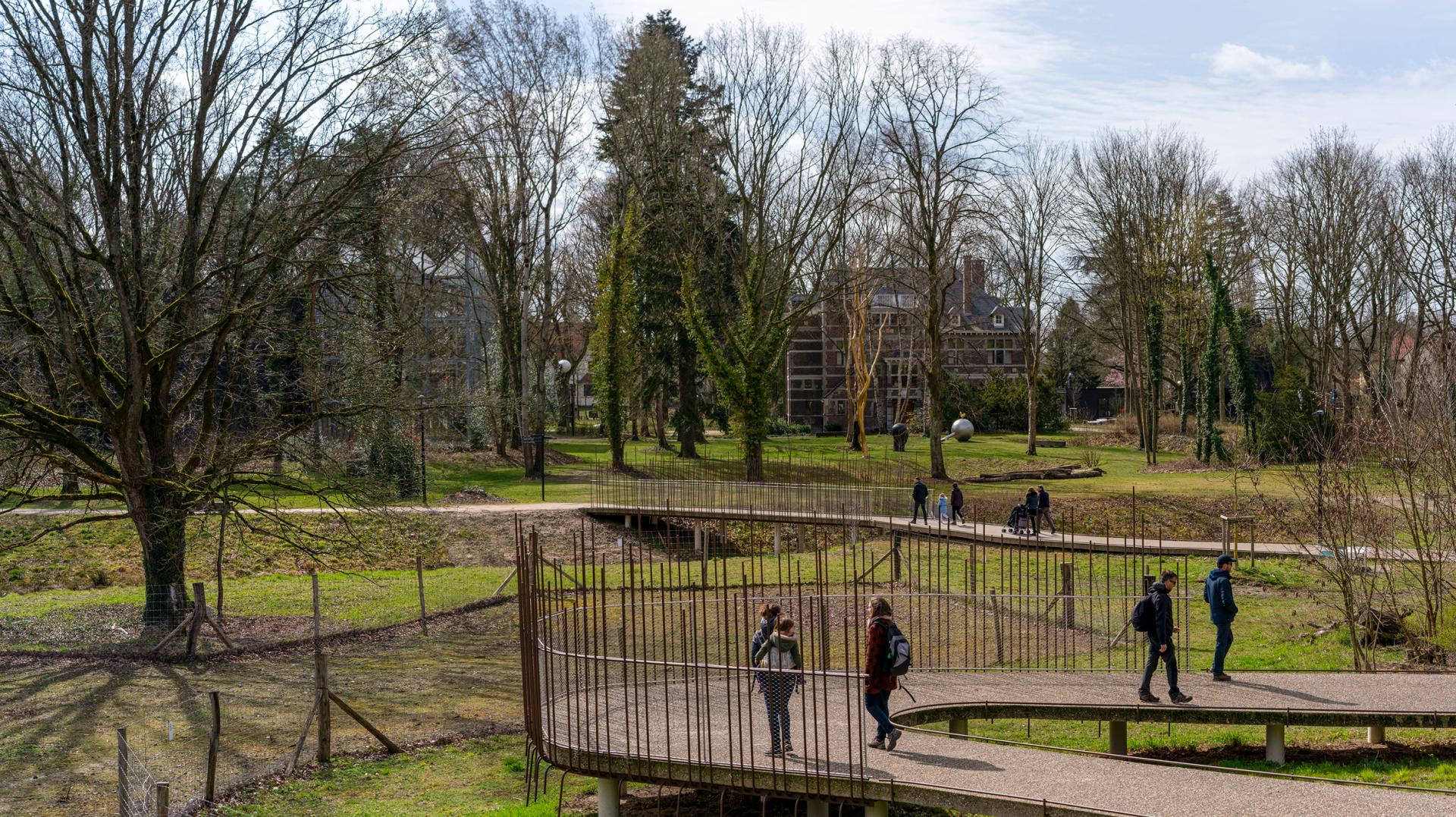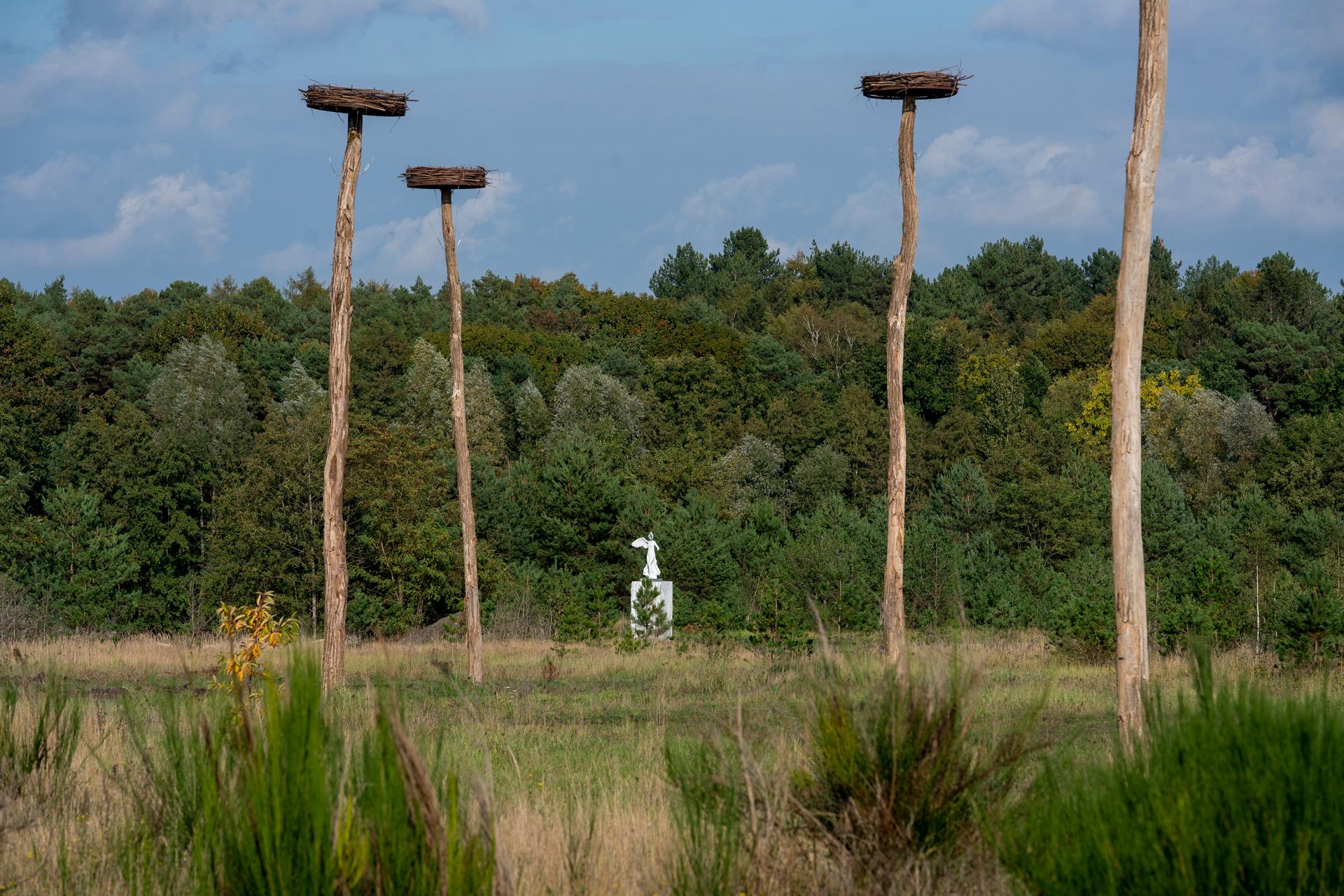LABIOMISTA
Basic information
Project Title
Full project title
Category
Project Description
With space for alpacas and art, wilderness and wonder, artist Koen Vanmechelen built a sanctuary for creativity and creatures in Belgium. LABIOMISTA is a 24 hectare evolving work of art celebrating the mix of life. Erected on the foundation of the mining past, LABIOMISTA invites, challenges and inspires you to think about the current society, and the society of the future. A belief in art as oxygen for life. A plea for diversity as the basis for all evolution.
Project Region
EU Programme or fund
Description of the project
Summary
LABIOMISTA is an atypical project, emerging from a remarkable collaboration between an artist, Koen Vanmechelen, and a city, Genk. The project is motivated by the belief in art as a catalyst for mutual understanding and as a guiding light in our search for answers to the great challenges of the 21st century – in particular – the relationship between nature and culture, and sustainable community development.
LA-BIO-MISTA, a self-invented word that points to life in all its mixed and variegated glory, is conceived by Vanmechelen as a permanent and evolving work of art. It represents humanity, nature and the relationship between both. The site weaves together culture, heritage, public park, contemporary architecture and ‘wild’ nature. A hiking trail guides visitors through an open air exhibition of (living) art installations from domestication via semi-domestication to wilderness. Through the lens and language of art, LABIOMISTA positions diversity as the basis for resilience building in both society and ecosystems and poses the fundamental question: ‘Where exactly is the outer limit of human intervention, and when do we cross it?’
But LABIOMISTA is more than an artwork. With the site, Vanmechelen wants to offer the ingredients for a possible new society, with a strong focus on community development and human rights. It is home to the international work tank OpUnDi or Open University of Diversity (OpUnDi) which was launched in 2011 at the 54th Venice Biennale. OpUnDi is the motor behind a wide range of collaborative community projects, foundations and university partnerships that evolve from LABIOMISTA.
For the city, LABIOMISTA is a major, future-facing driver of development, designed to inject the city – and the wider world – with fresh ideas and new projects. According to the mayor, LABIOMISTA has the potential to turn the city into a lab, one in which social and cultural diversity can grow and flourish.
Key objectives for sustainability
LABIOMISTA’s primary objective is to foster discussions across a wide range of people, from the public to artists to scholars, about how we can create more diverse, sustainable communities and about our relationship to other living creatures with which we share the earth. LABIOMISTA also aims to demonstrate what art, in the spirit of interdependency and cross-disciplinary collaboration, can do for sustainability and resilience thinking and how it can contribute directly and indirectly to the realisation of the UN SDGs.
So far the following milestones have been achieved. With LABIOMISTA, 24 ha. of built-up land was repurposed as a public park and ‘ode to biocultural diversity’. Half of the site, re-named Protected Paradise, has been safeguarded as ‘wild' nature, creating a transition zone to the Hoge Kempen National Park. In the other half, the Cosmopolitan Culture Park, visitors are introduced to the diversity that characterises our world and learn more about (de-)domestication. Here, Vanmechelen’s most iconic art projects explore how humanity, society and nature relate to each other. With the Cosmopolitan Chicken Project, the artist crossbreeds chickens from all over the world, an allegory on migration and diversity, but also a genuine means of increasing immunity. With the Planetary Community Chicken, the diversity of the Cosmopolitan Chickens is in turn introduced to local communities around the world. The projects emphasise the link between local and global and highlight the importance of diversity for immunity, fertility and resilience. Since opening in July 2019, more than 150.000 people have visited LABIOMISTA and different sustainability enhancing projects were implemented with local communities, universities and nature conservation organisations. Including i.a. Me, bee & tree (biodiversity); Instead of sleeping (biodiversity); Black Stork Baby (migration, re-wilding); and Gallo Galloway (nature conservation).
Key objectives for aesthetics and quality
LABIOMISTA is set up as a universe with a powerful emotional impact, based on the energy of life and on the creative gesture of the artist. The aesthetic engagement of LABIOMISTA aims to evoke wonderment in authenticity, originality and in the diversity of life.
Vanmechelen, the intellectual and artistic conceiver of LABIOMISTA translates what he learns from nature into iconic artworks and calls upon science almost as if it were a branch of poetry to investigate these reveries. These two acts develop an aesthetic project where artistic creation and scientific research join in the same ethical poetic goal: to discover how to make the world an inhabitable place. A place where the useful can coexist with the beautiful. LABIOMISTA displays over 80 of Vanmechelen’s artworks and installations.
LABIOMISTA also integrates different architectural highlights and heritage elements. The Ark, the entrance to the park and The Battery, Vanmechelen’s studio, are built by Swiss architect Mario Botta. Both buildings resonate in their simplicity and are raised in the same black stone, a reference to the location’s history as a coal mining site. The Battery contains an extraordinary greenhouse (The Looking Glass) and a huge eagle aviary. Villa OpUnDi dates from 1925. Listed as a monument, it exemplifies an eclectic-historical style with features of Mosan Renaissance. Team van Meer architects & co. restored the interior, furniture and installations are by Vanmechelen. LabOvo, the pavilion in the Cosmopolitan Culture Park is designed by Belgian-Spanish architecture firm Van Belle & Medina Architects. The Cosmopolitan Culture Park was designed by BURO Landschap, a Belgian landscape planning and urban design firm. The animals in the park, which play an essential inspirational role in the artist’s work, represent the diversity that typifies our world. They roam freely through most of the compounds, allowing them to develop their own hierarchical structures and natural ecosystems.
Key objectives for inclusion
LABIOMISTA is a story of collaboration and inclusion, a meeting place for all the creatures in the world, human and other animals. It aims to involve the widest possible range of people in its development. The unique combination of art, animals, public park, ‘wild’ nature, science and society in a special heritage context in the most diverse city of Flanders creates a broad platform for inclusion. Young people under 18 have free access as have all citizens of Genk. The site is fully accessible for wheelchairs. Audiotours, information boards and educational programs are available in multiple languages.
Each installation and project at LABIOMISTA is developed through a diverse network of people (community, scientists, university students, farmers, etc). These are the seedbeds from which new communities grow. These communities not only include the people who technically design or execute the installations, but also those who help develop and evolve their content. The collaborations become in themselves an integrated part of Vanmechelen’s evolving work of art.
To care for the animals at LABIOMISTA, Vanmechelen collaborates with local care-giving organisations who help vulnerable groups increase their strength, self-confidence and opportunities. People with a disability are appointed as the ‘conservators’ of the park and the animals. People who are themselves in need of care, in turn become the care-givers for the alpacas, llamas, chickens and other animals.
Collaborations have also been developed with multiple local and international universities, local youth organisations and civic partners to ensure a wide audience can be reached and engaged in the different projects. Projects like LaMouseion and Cosmogolem have a specific focus on youth and children.
The collaboration with different partners takes place under the auspices of the Open University of Diversity. Two Community Managers work specifically on the reach-out to communities, local and global.
Results in relation to category
LABIOMISTA is located in one of the most diverse and challenging areas of the city of Genk (BE), atop a former coal mine that was later transformed into a now defunct zoo, bordering the Hoge Kempen National Park. After the closure of the mine and later zoo, the once green area was left economically and ecologically scarred. No viable investment opportunities emerged for close to 20 years.
Artist Koen Vanmechelen was drawn to this ‘wounded place’, positioned at the crossroads of nature and city, industry and community. Given ‘free rein’ by the city, he transformed the 24 ha of bare built-up land into an evolving work of art on the mix of life. Integrating the site’s unique history and location, the artist invested 30 years of work into the regeneration of the area. 12 ha were repurposed as public park and open exhibition space, the other 12 ha were safeguarded as ‘wild nature’ and built out as a transition zone to the National Park. The site’s Cultural heritage became part of the contemporary artwork. LABIOMISTA also houses Vanmechelen’s most iconic (living) art installations, his studio (by Mario Botta) and the Open University of Diversity, which drives collaborations with universities, scientists and communities from all over the world.
Vanmechelen engaged the local communities from the get-go, explaining and visualising his ideas and philosophy. Community collaboration has remained a key in the further development and operation of LABIOMISTA and in the gradual development of the surrounding areas. Local communities function as little labs, testing cases for how projects can survive, or not, how leadership can develop. Nomadland, with its allotment gardens, picnic areas and clearings for events is one such example.
After 20 years of vacancy, LABIOMISTA has become the beating heart of the area with places for unstructured encounters, socializing, events and projects as well as for scientific research, solitude and reflection.
How Citizens benefit
LABIOMISTA has been deeply embedded in the local community. Projects like Nomadland; Me, bee&tree; Instead of sleeping; LaMouseion, Black Stork Baby; Love letters; etc. are realised in collaboration with the local communities and a wide range of civic partners (UHasselt, Global Campus of Human Rights, VUB, ULB, KUL, UGhent, VIB, De regenbOog vzw, Nationaal Park Hoge Kempen, Natuurpunt, etc…). These collaborations are essential to the operation and development of the site. They offer a collaborative learning platform that feeds both community, civic partners and site.
The site itself has also generated new employment, inclusion and activation opportunities. An average of 40 community members are involved as volunteers in the park. Local care groups take care of the animals and an ‘employment activation floor’ is being developed next to LABIOMISTA, building skills related to the site’s philosophy and in response to the increased number of visitors in the area (green, smart, sustainable tourism).
By attracting new (inter)national audiences, partnerships and investments to one of the poorest areas of the city, LABIOMISTA has also created new economic opportunities for local residents. A conscious choice was made to not develop any commercial catering and recreation activities at LABIOMISTA. Instead, the project promotes the growth of local businesses and neighbourhood initiatives. Nomadland, with its allotment gardens, picnic areas and clearings for events is one such example. It links LABIOMISTA to the neighbourhood and was developed in partnership with local ngo’s and entrepreneurs as a place where visitors and communities can meet and discover the diversity of local food and cultures. The revenue from LABIOMISTA’s entrance fees is also reinvested in its entirety in the park’s public role, and in neighbourhood projects – a rather unique approach.
Innovative character
LABIOMISTA presents a new bold approach to urban renewal. A major redevelopment project, fully envisioned by an artist, that at once rehabilitates the natural landscape, inspires social transformation and stimulates economic growth in the region. A 24ha evolving work of art on the mix of life. A wild gene in the urban structure; starting from the explosiveness of creativity.
Unique in its approach, LABIOMISTA positions (living) art installations as sources of implicit knowledge - instances of truth that hold potential for future development - generators of novel useful ideas, to be further discovered and tested through the reasoning of science or through practical application by the communities.
Developed as an antidote to an overly focused mono-cultural curriculum LABIOMISTA’s modus operandi is ‘crossing’ (nature and culture, local and global, art - science and community, past - present and future, ...). Each project and installation develops its own transdisciplinary community, joining the creative associative intuitive thinking of the arts with the structured reasoning of science and the common sense of communities. The collaborations and community partnerships are essential to the site’s evolution and operation and are managed and documented by its Open University of Diversity (OpUnDi).
The entrance revenue for LABIOMISTA and knowledge generated through OpUnDi is reinvested fully in the public function of the park and in neighbourhood projects.
Vanmechelen, with the support from the city, purposefully eschewed the integration of pre-existing commercial dining and recreation options on LABIOMISTA’s site, so as to provide opportunity for local businesses and initiatives to thrive. This focus on the local dovetails directly with his vision for creating self-sustaining, healthy, and vibrant communities, and the understanding that local and global motivations are equally important and valid, and must be developed in parallel to ensure the success of both.

